Related Research Articles
Thirteen vessels of the Royal Navy have borne the name HMS Mohawk, after the Mohawk, an indigenous tribe of North America:
Twelve ships of the Royal Navy have been named HMS Active or HMS Actif, with a thirteenth announced:
Seven vessels of the Royal Navy have been named HMS Arab:
Jean Bart may refer to one of the following ships of the French Navy or privateers named in honour of Jean Bart, a French naval commander and privateer.
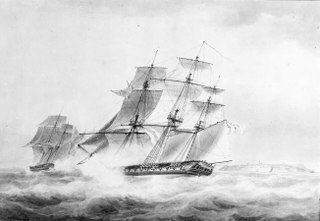
HMS Phoenix was a 36-gun Perseverance-class fifth-rate frigate of the Royal Navy. The shipbuilder George Parsons built her at Bursledon and launched her on 15 July 1783. She served in the French Revolutionary and Napoleonic Wars and was instrumental in the events leading up to the battle of Trafalgar. Phoenix was involved in several single-ship actions, the most notable occurring on 10 August 1805 when she captured the French frigate Didon, which was more heavily armed than her. She was wrecked, without loss of life, off Smyrna in 1816.
Eleven ships of the Royal Navy have borne the name HMS Blonde:
Mutine was an 18-gun Belliqueuse-class gun-brig of the French Navy, built to a design by Pierre-Alexandre-Laurent Forfait, and launched in 1794 at Honfleur. She took part in the Battle of Santa Cruz de Tenerife, where the British captured her. She was recommissioned in the Royal Navy as HMS Mutine, and eventually sold in 1803.
Eleven ships of the Royal Navy have borne the name HMS Hawk after the bird of prey, the hawk:
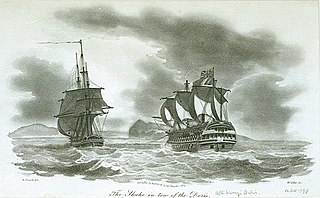
HMS Doris was a 36-gun fifth-rate frigate of the Royal Navy, launched on 31 August 1795. which saw service in the French Revolutionary and Napoleonic Wars. Doris was built by Cleveley, of Gravesend.
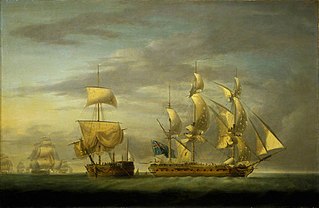
HMS Santa Margarita was a 36-gun fifth-rate frigate of the Royal Navy. She had been built for service with the Spanish Navy, but was captured after five years in service, eventually spending nearly 60 years with the British.
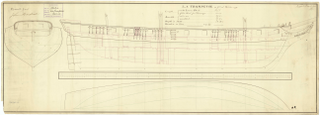
HMS Trompeuse was the French privateer Mercure, captured in 1799. She foundered in the English Channel in 1800.
Three ships of the British Royal Navy have been named HMS Observer:
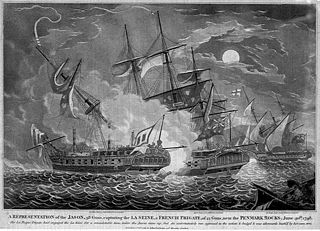
HMS Jason was a 38-gun Artois-class fifth-rate frigate of the Royal Navy. She served during the French Revolutionary Wars, but her career came to an end after just four years in service when she struck an uncharted rock off Brest and sank on 13 October 1798. She had already had an eventful career, and was involved in several engagements with French vessels.
The first HMS Epervier, sometimes spelled HMS Epervoir, was the French ex-naval brick-aviso and then privateer Épervier, launched in 1788. The British captured her in 1797 and registered her in 1798 as an 18-gun brig-sloop of the Royal Navy. The Navy never commissioned her and she was sold in 1801.
Two ships of the Royal Navy have borne the name HMS Spencer. A third was renamed before being launched:
Seventeen ships of the Royal Navy have borne the name HMS Dispatch, or the variant HMS Despatch:

HMS Entreprenante, was a 10-gun cutter that the Royal Navy captured from the French in 1798. The British commissioned her in 1799 and she served during the French Revolutionary and Napoleonic Wars, participating in the Battle of Trafalgar. She has been the only ship of the Royal Navy to bear the name. She took part in several small engagements, capturing Spanish and French ships before she was sold in 1812 for breaking up.
Ten ships of the Royal Navy have borne the name HMS Renard, or HMS Reynard, after the French for fox, and the anthropomorphic figure of Reynard:
Four ships of the Royal Navy have borne the name HMS Pandour, after the Pandurs, an 18th-century force of Croatian soldiers, who served the Habsburg monarchy as skirmishers and who had a reputation for brutality:
HMS Hardi was built at Cowes c. 1795 for Spanish owners. In 1796 she became the French privateer Hardi. The Royal Navy captured her in 1797 and sold her in 1800.
References
- Colledge, J. J.; Warlow, Ben (2006) [1969], Ships of the Royal Navy: The Complete Record of All Fighting Ships of the Royal Navy (Revised ed.), London: Chatham, ISBN 978-1-86176-281-8, OCLC 67375475